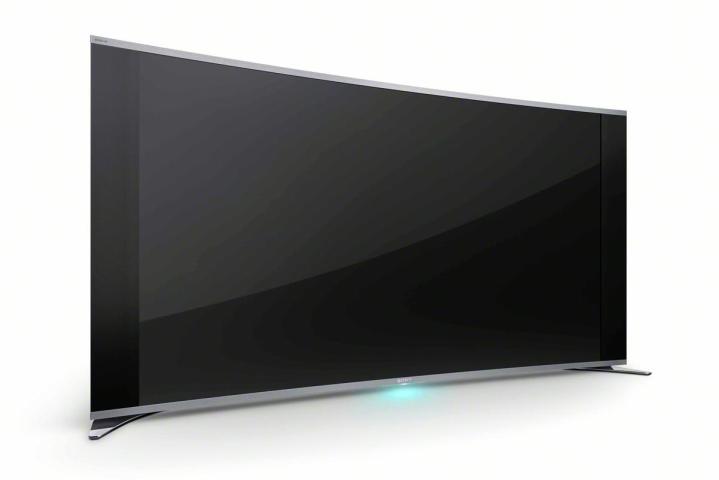
Within weeks of LG and Samsung’s curved OLED TV launches comes word that Sony has developed its own curved television. During an event at Lincoln Center in New York today and in anticipation of IFA 2013, Sony announced the 65-inch KDL-65S990A LED television, due to hit stores in October for $4,000. Before getting too excited, though, take special note: We said LED, not OLED.
At 65-inches, Sony’s KDL-65S990A is the largest curved display on the market. It also bears the distinction of being the “world’s first curved screen LED television.” But, with all the talk of curved OLED TV’s late, it might be easy to mistake this TV as an OLED model, and it most certainly is not that. As an LED TV, it will suffer from the same limitations flat-screen LED TVs do: poor black levels and poor screen uniformity.
Simply put, LED televisions are just LCD displays with LED backlights. Using LED lights allows for an extremely thin profile, which many consumers find attractive. However, LCD TV’s fail to produce deep, dark blacks, which are critical to a picture’s depth and contrast. Also, LED TV’s tend to exhibit images that are brighter toward the edges than they are in the center, with blooms of light near where the LED bulbs are situated. By contrast, OLED TV’s use organic compounds to produce light. They are capable of the best black levels we’ve seen in a TV, outstanding color accuracy, excellent off-axis viewing and can be made to be as thin as a pencil.
Still, the TV is curved, and Sony is betting that pairing that with it’s expertise in engineering outstanding looking televisions is going to make this set a winner. Mike Lucas, senior VP of Sony’s home entertainment and sound division, describes the curve as subtle and claims the TV borrows from the screen technology found in movie theaters to deliver, “an immersive experience that makes viewers feel as if they are truly part of the action…” If any of that plays out to be true, this move by Sony could turn out to be wildly successful.

The TV also features an advanced sound system, with 8 forward-facing speakers angled in multiple directions to create a surround sound experience. Two of those speakers are dedicated to surround effects and angled outward while the inward facing speakers take care of specific sounds, like dialogue, aiming them directly at the listener.
It’s entirely possible that this curved giant of a TV will surprise us with better-than-expected performance, but without any details on how Sony handled the backlighting technology, it’s impossible to say for sure. For now, we can’t help but point out that Panasonic’s stellar VT60 series plasma costs more than a $1,000 less and offers one of the best pictures we’ve seen all year, bested only by recent OLED TV offerings. Then again, that Panasonic plasma isn’t curved. So, there’s that.




